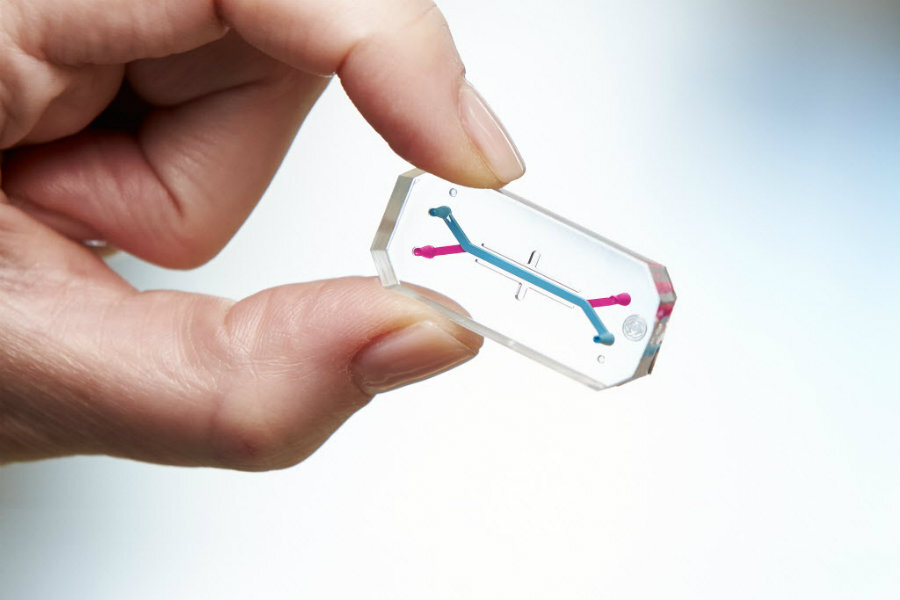How ‘organs-on-chips’ could end animal testing
Loading...
The end of animal testing may come in the form of tiny, transparent microchips.
The aptly named “organs-on-chips,” developed by researchers at Harvard’s Wyss Institute for Biologically Inspired Engineering, mimic on the microscale the functions of human organs such as the heart, lungs, and intestines, which would allow scientists to test drugs and cosmetics at less cost, less time, and without the use of animals.
The technology, which London’s Design Museum has just named “Design of the Year,” comes at a time when public support is beginning to drop for the use of animals in scientific research. It also reflects design’s changing definition in the face of scientific innovations that are as sleek as they are functional.
“When viewed through the specious prism of social media, the world can seem to have harnessed technology primarily either for frivolity, or for war,” the Independent’s editorial team wrote of the project. “Organs-on-Chips is a reminder that technological advances also enable very clever people to push boundaries in ways beneficial to us all.”
Each chip, about the size of a computer memory stick, replaces the structures of an organ with microfluidic channels lined with living human cells, and then simulates those organs’ functions. “For example,” wrote Wired’s Liz Stinson, “running air through a channel while using a vacuum to introduce a flexing motion will simulate the patterns of human breathing.”
Because the chips are made of a clear flexible polymer, scientists can observe the processes within in real time, on microscale. The researchers’ goal is to build chips for different organs and link them together to create a whole-body network that reveals the effects of a drug, cosmetic, or chemical on an entire person.
“The organs-on-chips allow us to see biological mechanisms and behaviours that no one knew existed before,” Don Ingber, founding director of the Wyss Institute, told The Guardian. “We now have a window on the molecular-scale activities going on in human organs, including things that happen in human cells that don’t occur in animals.”
Animal-rights advocates have long argued that animal testing is not only cruel but futile. About 100 million animals – including mice, rabbits, hamsters, guinea pigs, frogs, monkeys, birds, and dogs – are used for chemical, food, cosmetic, and drug testing every year, according to the People for the Ethical Treatment of Animals (PETA).
Yet studies have shown that successful testing on animals doesn’t always translate to humans.
“The paradigm used by pharmaceutical companies to discover and develop new drugs is broken,” Wyss researchers wrote on the organs-on-chips project page. “Clinical studies take years to complete and testing a single compound can cost more than $2 million. Meanwhile, innumerable animal lives are lost, and the process often fails to predict human responses.”
While still in its infancy and years away from replacing animal testing on a broad scale, the technology nonetheless promises to one day analyze the specific effects of drugs on humans with greater accuracy and speed, Mr. Ingber told The Guardian.
Already the researchers behind organs-on-chips have founded a startup, Emulate, which is working with companies such as Johnson & Johnson on pre-clinical trial testing, Wired reported.
At the same time, organs-on-chips mark the burgeoning relationship between scientific research and the principles of design.
Paola Antonelli, design curator at New York’s Museum of Modern Art and who nominated organs-on-chips for the Design Museum award, said in a statement: This is “the epitome of design innovation – elegantly beautiful form, arresting concept and pioneering application.”








